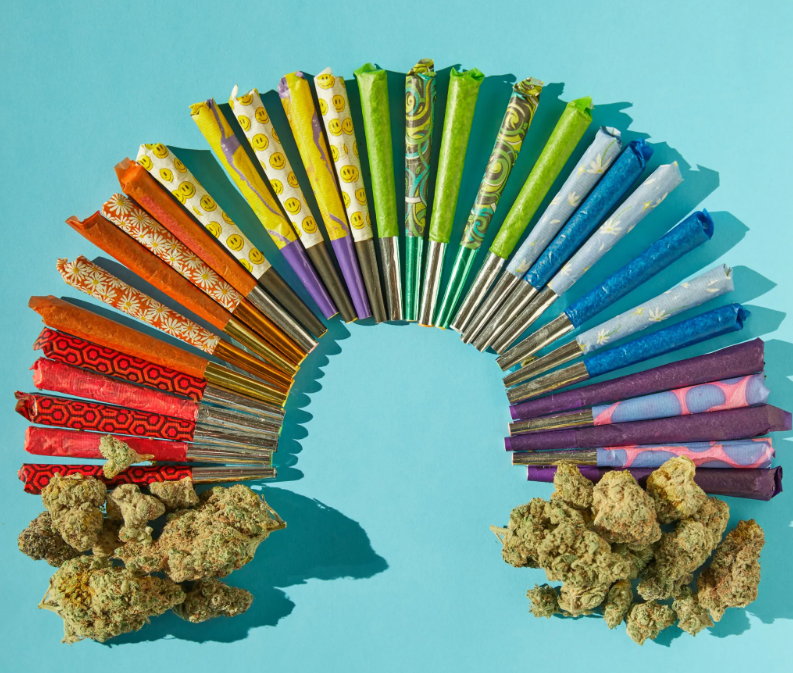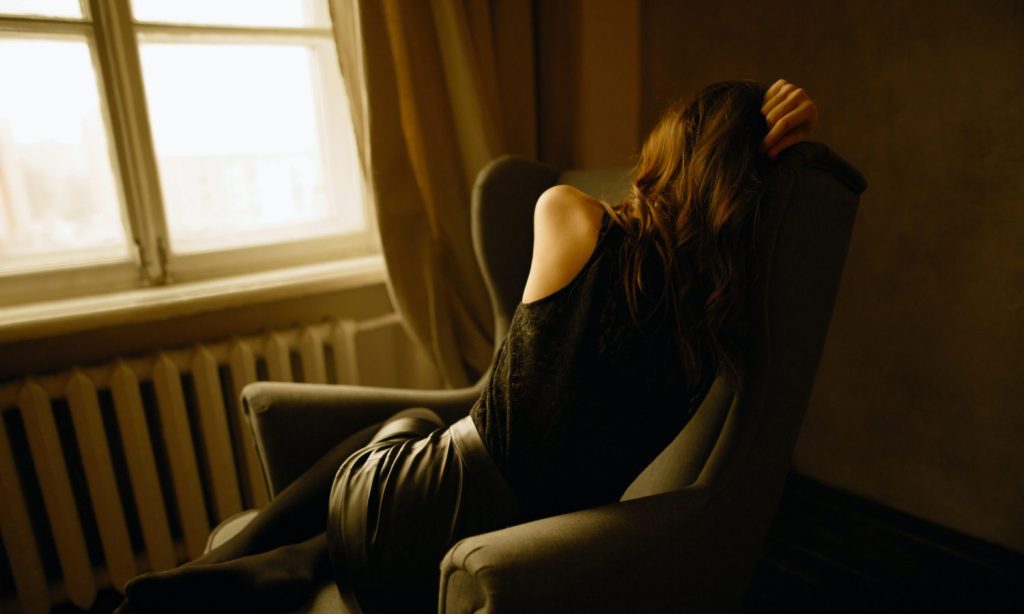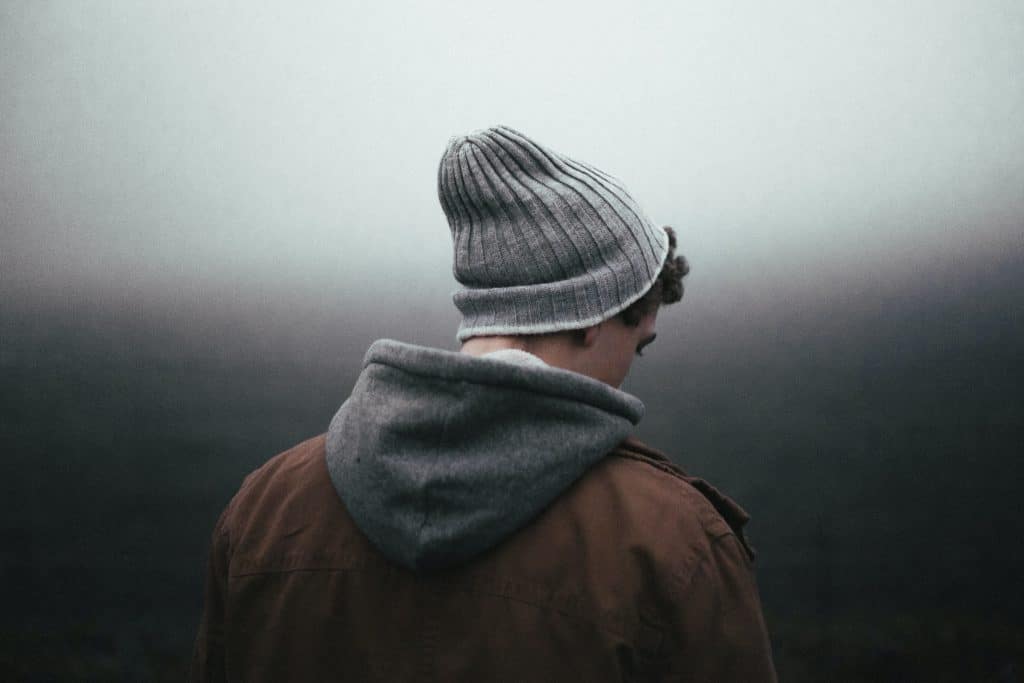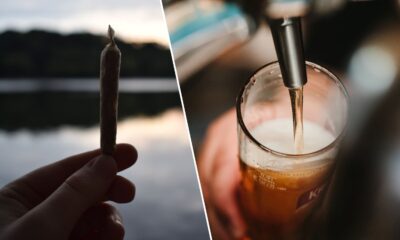Lifestyle
How cannabis and the drag ballroom scene changed my life

I have been a writer, poet, rapper, pencil sketch artist, makeup artist, fashion model, burlesque performer, costume designer, and creative director. At some point, I decided it was a good idea to maybe run away with the circus, so I became a fortune teller and tarot card reader. But at the end of the day, I chose to become a cannabis nurse, an expert on the body’s endocannabinoid system (ECS). As an educator who advocates for access as well as safe and effective plant-based therapies, I teach patients how to heal with weed.
Growing up, my freedom of expression was heavily encouraged by my immediate family, but I hit an unexpected brick wall when it came time to freely express the truth of my sexuality. I’ll spare the ugly details, but Mom would rather have me dead or disfigured than be a “bulldagger.”
Since my early teens, I was always brave and honest when it came to my identity and sexuality. At the age of 14, I was the first in my peer group to come out as bisexual and bi-romantic — contrary to the approval of my strict Seventh-day Adventist and Baptist extended family.
On that day, I had just spent several grueling hours rehearsing for an upcoming stage performance with my singing group. For the first time, a few of us decided to light up a joint to unwind, connect, and brainstorm ideas.
It was here that my best friend and I discussed our sexualities for the first time, and, after passing him the joint, I told him that it was okay for him to embrace who he was. He denied it at first, and for a time after, but he’s come out since then, and I understand why he denied it for as long as he did.
As an LGBTQ+ and BIPOC individual, I can confidently say there’s an overall lack of acceptance from society and family once you’ve decided to “come out.” Many of us have faced hatred, ostracization, and even the threat of bodily harm and death from those that we considered our closest loved ones. This is exacerbated for those who identify as Black, African American, Latinx, and who are also born male.
Years later, finally, at his own dramatic coming-out party, my friend invited me to participate in what he described as “a competition, sort of like a pageant, but for the gays.” But before I could go, he explained that I needed to wear a ripped bridal gown, have a bloody mannequin head instead of flowers, and walk the runway with a fierceness that no bridal show has ever seen. My friend wore a tux and a brand new pair of red glitter 6-inch platform pumps. It was 10s across the board. We won.
It was that night that I unknowingly agreed to be initiated into the wonderful world of balls, club kids, and LGBTQ+ Hollywood.

The LGBTQ+ community and the origins of drag balls
Full of stars, legends, and icons, balls have been around for more than a century in the US. They were popularized after the Stonewall riots in New York in 1969 and gained momentum throughout the 1970s as safe havens for anyone who had been ostracized and disowned for being LGBTQ+.
Formed mostly by Black and Latinx drag queens and gay men to combat racism, these outcasts would form strong family units known as “Houses.” Named after some of the fashion world’s most iconic labels — such as Mugler, Balenciaga, and Ebony — the houses are composed of “parents,” mother-father figures who guide and protect their “children,” often providing housing if someone has been forced to leave their biological family’s home.
House parents foster creative expression and prepare their children to compete and battle against other houses in multiple categories, including runway, voguing, and face categories. The competition is steep and the prizes can reach thousands of dollars.
Today, we see House Ballroom culture becoming a worldwide phenomenon. It’s showing up at nightclubs in Japan and Europe and in mainstream media on TV shows like Pose and Legendary. Many ballroom kids have gone on to build successful careers as choreographers, designers, authors, and actors.
In 2009, I was hooked and recruited into the House of Blahnik. This House would be one of the first that were devoted to HIV prevention, and since I’m a professional nurse focused on holistic healing and herbalism, I was able to clearly recognize how this community is a great benefactor of medical cannabis in the treatment of HIV/AIDS.
Formed by the icon Jay Blahnik, the House of Blahnik became my home and outlet for creative expression. I was trained and guided by ball legends who boosted my overall confidence on the runway. And when the ball was over, we would commune over wine and weed.
In these bonding moments, there were house beats blaring from speakers, glitter and feathers scattered across the floor, and cannabis clouds heavy in the air. We planned for the next competition and discussed ways in which we could help each other grow and heal.
These same allies encouraged me to pursue cannabis nursing. We were able to recognize the importance that cannabis played in our healing. And in our teens, my dearest friend would be one of the first people I knew to acquire HIV. When he was struggling with the complications of the progressing illness and rapidly losing weight, his physicians wrote him off and told his family that it would be best to prepare his funeral arrangements.
I’m forever grateful to the brave nurse who secretly told my friend about the appetite-stimulating and potentially relieving benefits of cannabis. She encouraged his mom to cancel the funeral, and instead roll her son a joint, smoke it with him, and feed him anything he wanted to eat.
Though I’m not sure if it was the weed or the bonding moments with his estranged family that encouraged my friend to live, some things are for certain: the ballroom and cannabis communities are about culture, community, and creativity. I and my closest loved ones wouldn’t be alive if it were not for ballroom and cannabis.
Source: https://weedmaps.com/news/2022/06/cannabis-and-the-drag-ballroom-scene/
Business
Alabama to make another attempt Dec. 1 to award medical cannabis licenses

Alabama regulators are targeting Dec. 1 to award the first batch of medical cannabis business licenses after the agency’s first two attempts were scrapped because of scoring errors and litigation.
The first licenses will be awarded to individual cultivators, delivery providers, processors, dispensaries and state testing labs, according to the Alabama Medical Cannabis Commission (AMCC).
Then, on Dec. 12, the AMCC will award licenses for vertically integrated operations, a designation set primarily for multistate operators.
Licenses are expected to be handed out 28 days after they have been awarded, so MMJ production could begin in early January, according to the Alabama Daily News.
That means MMJ products could be available for patients around early March, an AMCC spokesperson told the media outlet.
Regulators initially awarded 21 business licenses in June, only to void them after applicants alleged inconsistencies with how the applications were scored.
Then, in August, the state awarded 24 different licenses – 19 went to June recipients – only to reverse themselves again and scratch those licenses after spurned applicants filed lawsuits.
A state judge dismissed a lawsuit filed by Chicago-based MSO Verano Holdings Corp., but another lawsuit is pending.
Source: https://mjbizdaily.com/alabama-plans-to-award-medical-cannabis-licenses-dec-1/
Business
Pot Odor Does Not Justify Probable Cause for Vehicle Searches, Minnesota Court Affirms

The Minnesota Supreme Court affirmed that cannabis odor does not constitute probable cause to search a vehicle.
If Minnesota police search a vehicle solely based upon the smell of pot, they can’t justify searching a vehicle, even if there is evidence found of other alleged crimes. Even after appealing a lower court decision to suppress the evidence—twice—the Minnesota Supreme Court agreed, and the dismissal of his charges stands.
In a ruling filed regarding a case the State of Minnesota Court of Appeals on Sept. 13, the Minnesota Supreme Court affirmed that cannabis odor does not constitute probable cause to search a vehicle.
The case has been ongoing for two years. On July 5, 2021, just before 10 p.m., a Litchfield police officer stopped a car for an obscure local law: the light bar mounted on the vehicle’s grill had more auxiliary driving lights than are permitted under Minnesota law. The officer asked the driver, Adam Lloyd Torgerson, for his license and registration. Torgerson, his wife, and his child were present in the vehicle. The officer stated that he smelled pot and asked Torgerson if there was any reason for the odor, which he initially denied. But cops found a lot more than just pot.
A backup officer was called in. The couple denied possessing any pot, but Torgerson admitted to smoking weed in the past. The second officer stated that the weed odor gave them probable cause to search the vehicle and ordered them to exit the vehicle. The first officer searched the vehicle and found a film canister, three pipes, and a small plastic bag in the center console. The plastic bag contained a white powder and the film canister contained meth, which was confirmed in a field test.
Torgenson was charged with possession of meth pipe in the presence of a minor and fifth-degree possession of a controlled substance after the unwarranted search of Torgerson’s vehicle.
Police Aren’t Allowed to Do That, Multiple Courts Rule
But the search had one major problem—cops weren’t searching for a meth pipe. They only searched his car because they could smell pot, and the meth and paraphernalia were a surprise for everyone. Still, they had no grounds to search the vehicle. The man’s charges were later dismissed after the district court determined the odor of cannabis alone was insufficient basis for probable cause to search the vehicle, regardless of whatever other drug paraphernalia they found.
The state appealed the case, but the Minnesota Court of Appeals affirmed the district court’s decision. The case was appealed a second time, this time to the Minnesota Supreme Court, which agreed with the lower court’s ruling.
“This search was justified only by the odor of marijuana emanating from the vehicle,” the Minnesota Supreme Court decision reads. “Torgerson moved to suppress the evidence found during the search, arguing that the odor of marijuana, alone, is insufficient to create the requisite probable cause to search a vehicle under the automobile exception to the warrant requirement. The district court granted Torgerson’s motion, suppressed the evidence, and dismissed the complaint. The State appealed. The court of appeals affirmed the district court’s suppression order. Because we conclude that the odor of marijuana emanating from a vehicle, alone, is insufficient to create the requisite probable cause to search a vehicle under the automobile exception to the warrant requirement, we affirm.”
It amounts to basic human rights that apply—regardless of whether or not a person is addicted to drugs.
Other States do Precisely the Same Regarding Pot Odor as Probably Cause
An Illinois judge ruled in 2021 that the odor of cannabis is not sufficient grounds for police to search a vehicle without a warrant during a traffic stop.
Daniel J. Dalton, Associate Judge of the 14th Judicial Circuit, issued a ruling in response to a motion to suppress evidence in the case of Vincent Molina, a medical cannabis patient arrested for cannabis possession last year.
In that case, Molina was arrested despite the decriminalization of small amounts of cannabis in Illinois in 2019 with the passage of the Illinois Cannabis Regulation and Tax Act.
In some states, the issue of probable cause and cannabis was defined through bills.
Last April, the Maryland House of Delegates approved a bill that reduces the penalties for public cannabis consumption and bars police from using the odor of cannabis as the basis for the search of an individual or auto. Under Maryland’s House Bill 1071, law enforcement officers would be prohibited from using the odor of raw or burnt cannabis as probable cause to search a person or vehicle.
The rulings represent the rights of citizens when they are pulled over by police, even if there are hard drugs involved.
Business
Can Cannabis Help Seasonal Depression

Ultimately, seasonal affective disorder can set in as quickly and seamlessly as the fall foliage on the trees outside.
The weather and foliage on the trees aren’t the only things that are changing around this time of year. As the sun starts to set earlier and earlier, peoples moods can be affected by the decrease in sunlight. This is often known as seasonal affective disorder (SAD), and it can make the winter months miserable for lots of people. Can cannabis help seasonal depression?
Fortunately for those that do suffer from SAD, there are numerous remedies that can make this time of year more bearable. Exercise, vitamin supplements and even marijuana can have an enormous impact on fighting against the disorder. While there are resources for offsetting the disorder, getting a full understanding of the problem is paramount in being able to overcome it.

Seasonal Affective Disorder Symptoms
One of the most crucial steps in combating SAD is properly identifying its symptoms. Some of those symptoms include:
- Anxiety
- Social withdrawal
- Sleepiness and fatigue
- Weight gain
- Suicidal thoughts
- And several others
Those who are suffering from any of these symptoms should refrain from self-diagnosis and seek professional assistance. That professional assistance could lead to more resources to fight the disorder such as an antidepressant prescription.
How Common is Seasonal Affective Disorder?
In recent years, more and more people who suffer from seasonal affective disorder have begun opening up about their struggles. An estimated 10 million Americans are said to be currently dealing from SAD. Additional research shows women are four times more likely to be diagnosed with the disorder than men. SAD also appears to be more prevalent among people with pre-existing mental health conditions like bipolar disorder.
The number of people across the globe who suffer from seasonal depression is slightly lower than that of the United States. Only about 1-2% of the global population is said to suffer from seasonal depression while about 5% of the U.S population suffers from SAD.

How to Fight Seasonal Affective Disorder
There are a number of proven ways to offset some of the sadness that comes with the changing of the seasons. For example, cannabis contains cannabinoids that can have a positive impact on mood, while potentially increasing serotonin levels. When it comes to decreasing anxiety levels, that’s where CBD comes into play. By working with our body’s endocannabinoid system, CBD has been seen as instrumental in boosting dopamine levels.
Aside from cannabis, there are a handful of other at-home methods that can help alleviate the symptoms of seasonal affective disorder. Spending more time with friends, family and loved ones can be highly effective in offsetting some SAD symptoms. The same can be said for making an effort to get lots of sunlight and getting regular exercise.
Ultimately, seasonal affective disorder can set in as quickly and seamlessly as the fall foliage on the trees outside. Knowing that you aren’t alone, and having the best practices for fighting it, can make the fall and winter months better than you could have ever imagined.
Source: https://thefreshtoast.com/medical-marijuana/can-cannabis-help-seasonal-depression/
-

 Business2 years ago
Business2 years agoPot Odor Does Not Justify Probable Cause for Vehicle Searches, Minnesota Court Affirms
-

 Business2 years ago
Business2 years agoNew Mexico cannabis operator fined, loses license for alleged BioTrack fraud
-

 Business2 years ago
Business2 years agoAlabama to make another attempt Dec. 1 to award medical cannabis licenses
-

 Business2 years ago
Business2 years agoWashington State Pays Out $9.4 Million in Refunds Relating to Drug Convictions
-

 Business2 years ago
Business2 years agoMarijuana companies suing US attorney general in federal prohibition challenge
-

 Business2 years ago
Business2 years agoLegal Marijuana Handed A Nothing Burger From NY State
-

 Business2 years ago
Business2 years agoCan Cannabis Help Seasonal Depression
-

 Blogs2 years ago
Blogs2 years agoCannabis Art Is Flourishing On Etsy









